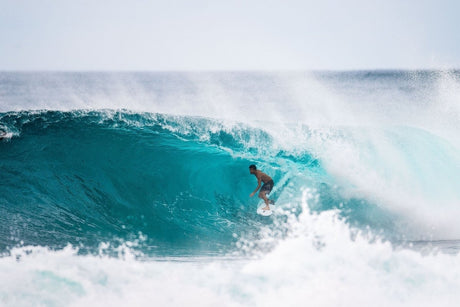The evolution of winter sports in the mountains is inevitable. Between climate change and the emergence of new technologies, ski resorts have no choice but to adapt to these innovations in order to endure over time.

Weather and climate change: a direct impact on winter sports
With increasingly mild and unpredictable winters, the lack of anticipation has become a real obstacle for winter sports enthusiasts. The uncertainty in weather forecasts makes life difficult for mountain lovers who seek to enjoy the best conditions.
Ski resorts are facing increasing challenges related to snow availability. Advances in snowmaking technologies are becoming crucial, as is the need to find new ways to adapt to climate variations.
It becomes imperative to develop systems for collecting, analyzing, and interpreting weather data in order to better understand the climate trends specific to each region.
Advanced weather sensors and real-time monitoring technologies can be integrated to enable a more precise assessment of future weather conditions. This accurate data is essential for anticipating fluctuations in temperature, precipitation, and humidity, all of which have a direct impact on the quality and availability of snow. Investments in these innovative solution research efforts will help ensure optimal skiing conditions despite climatic unpredictability.

Ecological awareness
These climate changes can only alert us to environmental problems and push us to question our habits. This could encourage ski resorts and winter sports enthusiasts to adopt more sustainable practices aimed at minimizing their environmental impact, such as using renewable energy, reducing waste, and preserving local ecosystems.
Many potential solutions already exist to approach this evolution in a more reasoned and environmentally respectful manner:
- Use of sustainable materials for infrastructure.
- Development of more energy-efficient ski lifts.
- Recovery and reuse of meltwater for artificial snowmaking.
- Implementation of alternative modes of transport to avoid pollution at the station.

Technological evolution
Beyond the use of new technologies in ski resort infrastructures, continuous advances can be expected in winter sports equipment technologies. Lighter, more durable, and high-performance materials could be developed, as well as connected clothing and accessories to improve comfort.
Some manufacturers already offer equipment to make skiing and snowboarding more enjoyable:
- Connected ski boots that adapt to the desired comfort level.
- Helmets with an integrated audio system to listen to music.
- Heated clothing to fight against the cold at high altitude.
- Touchscreen gloves to use your smartphone without uncovering your hands.
Mobile applications and tracking devices could become even more integrated into the winter sports experience, providing real-time information on snow conditions, routes, and allowing users to share their experiences online.

Towards new experiences
Due to the search for new experiences and diversification, less conventional winter sports destinations could gain popularity. Winter sports enthusiasts might seek more varied experiences beyond the traditional slopes:
Off-piste and Ski Touring
The search for a more authentic connection with the mountain leads many skiers to explore off-piste and ski touring. These activities offer less frequented routes, allowing enthusiasts to escape into pristine and preserved landscapes. Ski touring, in particular, offers an immersive experience, where skiers climb the slopes themselves before descending extraordinary runs.
Freeride and Snowboard
Freeride and snowboarding continue to gain popularity, attracting those seeking thrills and unexplored playgrounds. Winter sports enthusiasts look to push beyond the boundaries of marked trails to discover unconventional descents, blending adrenaline and exploration.
Events and Festivals
Ski resorts are adapting by organizing more events and festivals. By combining winter sports, music, gastronomy, and local culture, these events create an immersive experience. From extreme skiing competitions to high-altitude music festivals, these events diversify the resorts' offerings and attract a wider audience.

Ecotourism
Winter ecotourism offers a rewarding experience that goes beyond simply practicing winter sports. By encouraging respectful interaction with nature and local communities, this approach allows visitors to contribute positively to the preservation of mountain ecosystems while fully enjoying the winter wonders.
Ecological Snowshoeing
Well-guided snowshoeing excursions allow visitors to explore snowy areas while minimizing the ecological footprint.
Ecological Cross-Country Skiing Cross-country skiing on trails specially designed to preserve local wildlife and flora offers an environmentally friendly alternative to more traditional downhill skiing.
Winter Bird Watching
Birdwatching trails adapted to the winter season allow visitors to appreciate bird diversity without disturbing natural habitats.
Introduction to the Local Wildlife
Educational activities focused on local wildlife, such as excursions to observe animal tracks, contribute to the understanding and appreciation of winter ecosystems.
Ecological AccommodationsAccommodation establishments commit to eco-friendly practices, offering visitors the opportunity to stay in environmentally friendly lodgings.

These expectations, based on current trends, highlight the crucial importance of a dynamic and constantly evolving winter sports industry to meet the changing needs of enthusiasts. Collaboration among industry players, ongoing research, and innovation are essential to ensure a successful transition to a sustainable future for winter sports in the mountains.










